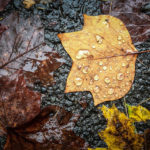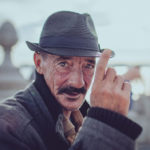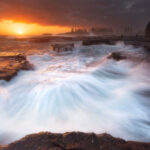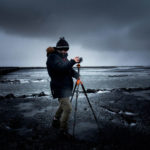Bad light and a poor location can quickly derail a shoot. But it doesn’t have to be that way. These obstacles can be overcome through smart placement of your subjects and by framing your shot creatively shown here by Doug Gordon. In a recent video tutorial, he walks through common issues and simple techniques that are essential for wedding photographers, who have to deal with a variety of lighting and location scenarios under pressure to get it right the first time:
In the video, Gordon takes wedding photos in a small green space adjacent to a parking lot. In the background you see an ugly fence and the back of some buildings. There are even bits of trash on the grass too. Not good!
The lighting is less than ideal too. The bright mid-afternoon sun creates hard shadows and there is limited shade.
All of these variables create hassles and headaches that require heavy post processing. However, careful positioning and framing of the subject can minimize or eliminate post work altogether.
Framing
The key is shooting it in a way that hides problematic issues. This can go a long way in fixing many concerns. Gordon says it’s important to consider:
- Camera height
- Depth perception
- Focal length
These points allow a photographer to frame the subject to minimize flaws or take advantage of strengths of the location. For example, Gordon gets low to the ground to compose his photograph with foliage of a tree above his subjects to bring contrast and to “distract” from or hide everything else. He uses the colorful foreground to complement the wedding couple at a focal length that balances the composition.
Lighting
In a poor lighting situation, remember to take advantage of what you’ve got. Put the bride in shade. Her white dress would otherwise get washed-out by direct sunlight.
In the video, Gordon points out how patches of light still shine through the tree’s shade. To resolve this, he creatively positions the groom at a comfortable angle to block additional light.
Lastly, remember that framing can complement your use of available light. In the example, bright sunlit areas contrast with shaded portions in the background. By using the angle he does, Gordon effectively composes the shot to include only the areas with shade.

Adapting to the situation as a wedding photographer
There are many variables in wedding photography. As a photographer, you can’t predict or control all of them. These handy tips will allow you to creatively tackle poor background or lighting scenarios with ease and confidence.
Like This Article?
Don't Miss The Next One!
Join over 100,000 photographers of all experience levels who receive our free photography tips and articles to stay current:






Everyone can take pictures but not everyone is gifted with the talent of taking great pictures and this is where professional photographers enter the scene. I totally agree with just leaving everything to them. But we all can learn, any person can learn. Maybe we can also be professional photographers or good photographers someday. Great tips by the way.
This is why I leave it to the professionals…
What you have done with that photo is great. I find that level of creativity hard to pull off. How do you think around the problem so quickly? Surly you have a wedding party putting pressure on you?